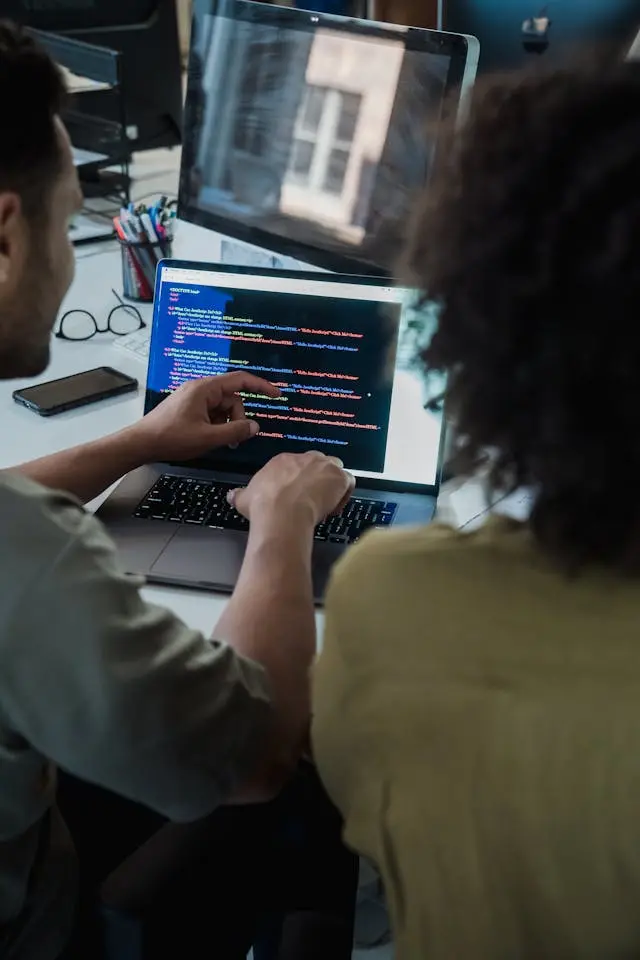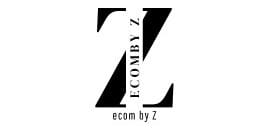NEW ITSM CONTENT IN 2025

ITSM CONTENT: SEARCH ENGINE OPTIMIZATION (SEO): NAVIGATING SEARCH TRENDS IN 2025
In the ever-evolving world of Information Technology Service Management (ITSM), the demand for up-to-date, innovative, and accurate content is more critical than ever. As businesses and organizations rely increasingly on complex IT systems and services, ITSM has become a cornerstone of effective IT management. ITSM encompasses a set of practices, policies, and procedures that organizations use to design, deliver, manage, and improve IT services, ensuring they meet both business and customer needs. With rapid technological changes, evolving business models, and the increasing complexity of IT ecosystems, the need for fresh, error-free ITSM content is more essential than ever, especially as we look toward 2025.
The ITSM content landscape is filled with a wide range of articles, blogs, whitepapers, and guides. However, many of these resources simply recycle existing knowledge, resulting in repetitive content that often fails to address current trends, challenges, or future requirements. Additionally, as organizations look for more actionable insights and advice, regurgitated content can become error-prone, outdated, and irrelevant. In response, IT professionals, vendors, and thought leaders in the field must move beyond simply rehashing familiar ideas and offer innovative, precise, and actionable ITSM content for 2025 and beyond.
In this article, we will explore the evolving needs of ITSM content, the challenges related to outdated and error-prone content, and the innovative approaches that can shape ITSM knowledge in 2025. We will discuss the importance of a shift towards future-focused ITSM practices, the role of new technologies in reshaping service management, and the necessity for accuracy and relevance in ITSM content to ensure that it addresses the needs of the digital transformation era.
Understanding the Changing Landscape of ITSM
Before delving into the need for fresh ITSM content, it is essential to understand the broader shifts occurring in the ITSM landscape. As we approach 2025, several key trends are influencing the way organizations manage IT services and, by extension, the content associated with ITSM practices:
- Digital Transformation: More businesses are undergoing digital transformations, where technology is used to fundamentally change business operations and models. This transformation has shifted how IT departments interact with the rest of the business and has led to a higher demand for advanced ITSM practices that can keep up with this fast-paced change.
- Cloud Adoption: The rapid adoption of cloud services has transformed IT service delivery. Cloud computing allows organizations to scale quickly, improve collaboration, and enhance flexibility. ITSM frameworks must now include cloud service management, multi-cloud architectures, and a deep integration with cloud platforms like AWS, Microsoft Azure, and Google Cloud.
- Automation and AI: Automation and artificial intelligence (AI) are revolutionizing ITSM. Tasks that were once manual, such as ticket routing, incident response, and service request management, can now be automated through AI-driven systems. These innovations have changed how services are delivered, and ITSM content must keep pace with these changes to help organizations implement and optimize these technologies.
- Agile and DevOps Integration: As Agile and DevOps methodologies have become widely adopted, ITSM practices must evolve to work seamlessly within these frameworks. The focus on collaboration, speed, and flexibility in DevOps and Agile has forced traditional ITSM practices to adapt, creating a need for updated, practical content on how to combine ITSM with these methodologies.
- Customer-Centric ITSM: Modern ITSM has shifted from being purely IT-centric to being customer-centric. This means focusing on delivering high-quality, seamless, and personalized experiences to end-users while ensuring service efficiency. The need for customer-focused ITSM strategies is a growing trend, requiring content that addresses how to improve service quality, user satisfaction, and user experience.
- Security and Compliance: As cybersecurity threats become more sophisticated, and compliance regulations become stricter, ITSM practices must include robust security management. ITSM frameworks will need to evolve to incorporate better security incident management, compliance reporting, and data protection strategies.
NEW ITSM CONTENT

The Problem with Regurgitated ITSM Content
While the ITSM industry has made significant strides, one of the primary challenges in the space is the abundance of regurgitated content. Much of the ITSM material available today often reiterates common knowledge and established frameworks without providing actionable insights or offering new solutions. This repetition can lead to several issues:
- Outdated Information: ITSM is a dynamic field that is heavily influenced by advancements in technology, business strategies, and management practices. Content that doesn’t reflect these changes can be irrelevant or, worse, misleading. For example, a 2015 article about ITIL (Information Technology Infrastructure Library) may not be helpful in 2025, as the framework has undergone revisions that better accommodate the needs of modern IT environments like cloud computing and AI integration.
- Lack of Specificity: Much of the available ITSM content is written at a high level, providing broad advice or generic guidelines. While these articles can serve as an introduction to ITSM for beginners, they often fall short of addressing the nuanced challenges organizations face in specific industries or in particular stages of their digital transformation.
- Error-Prone Content: When content creators simply repurpose older materials or quote outdated sources, errors or inaccuracies can creep in. This is especially problematic in ITSM, where small mistakes can lead to misapplication of strategies, poor service delivery, or compliance failures.
- Failure to Address Emerging Trends: As technology continues to evolve rapidly, new concepts like AI-driven service management, machine learning-based problem detection, and chatbots for service desk operations have emerged. Outdated content often fails to address these new technologies and methodologies, leaving organizations ill-prepared to take advantage of the latest developments in ITSM.
The Need for Innovative and Accurate ITSM Content in 2025
To address these issues and ensure ITSM content is relevant, innovative, and accurate, there are several key approaches that content creators and IT professionals should embrace.
1. Focus on Practical, Actionable Insights
In 2025, businesses and IT professionals will demand ITSM content that goes beyond high-level advice. Content must offer practical, actionable insights that help organizations navigate specific challenges in their ITSM practices. For instance, a blog post about implementing AI in incident management should not only explain the benefits of AI but also provide step-by-step instructions on how to integrate AI tools, use data effectively, and optimize workflows for service desks. The content should offer case studies, real-world examples, and success stories that illustrate how the principles discussed can be successfully implemented.
2. Emphasize Integration with Modern Technologies
As AI, automation, and cloud computing become integral to IT service management, content must focus on the intersection of ITSM and emerging technologies. Articles should explore how AI and machine learning are transforming service management processes, such as predicting and resolving issues before they impact users. Similarly, with cloud computing becoming the norm, ITSM content should cover the unique challenges of managing cloud-based services, including multi-cloud management, cloud security, and the integration of ITIL with cloud platforms. In addition, content should include expert opinions, trends, and forecasts to guide IT professionals in leveraging new technologies for service delivery.
3. Tailor Content for Different Audiences
Not all ITSM practitioners have the same level of expertise or face the same challenges. Therefore, ITSM content should be tailored to different audiences. For example, content intended for senior IT leaders should focus on high-level strategies, business cases for ITSM adoption, and long-term benefits, while content aimed at IT administrators or service desk teams should provide more hands-on, technical advice. Personalizing content to the needs of different roles will help ensure that it remains relevant and useful to a wider audience.
4. Address the Growing Importance of User Experience (UX)
As ITSM becomes more customer-centric, there is a growing need for content that focuses on improving the end-user experience. Articles should offer insights into how to design ITSM processes with the end-user in mind, such as improving service delivery, reducing resolution times, and increasing customer satisfaction. This could involve integrating self-service portals, chatbots, and knowledge bases that empower users to resolve issues independently. ITSM content must emphasize the importance of UX in service management and guide businesses on how to implement user-focused solutions.
5. Ensure Content is Continuously Updated and Accurate
To avoid the pitfalls of outdated content, ITSM content creators must prioritize accuracy and ongoing updates. As new ITSM frameworks and methodologies emerge, content should be regularly reviewed and revised to reflect these changes. For example, ITIL 4 has introduced new concepts such as the Service Value System (SVS), which should be reflected in all new ITSM content. Similarly, updates to data privacy laws, security best practices, and cloud service management should be incorporated to ensure content remains accurate and relevant.
6. Leverage Interactive and Engaging Content Formats
Content formats such as videos, podcasts, webinars, and interactive guides are becoming increasingly popular in the IT industry. In 2025, ITSM content creators should consider using these formats to make complex topics more digestible and engaging. For example, a video series explaining the integration of AI into service management could include interviews with industry experts, demonstrations of AI tools in action, and case studies showcasing the benefits of AI. Interactive content such as quizzes or self-assessment tools can help organizations evaluate their current ITSM practices and identify areas for improvement.
Conclusion: The Path Forward for ITSM Content in 2025
As we approach 2025, the ITSM content landscape is poised for significant transformation. In order to stay relevant, accurate, and valuable, ITSM content must evolve to reflect the latest trends, technologies, and best practices. By moving away from regurgitated and outdated content and focusing on providing actionable insights, real-world examples, and forward-thinking strategies, content creators can ensure that ITSM remains a powerful tool for organizations navigating the complexities of modern IT service management.
With a focus on innovation, accuracy, and practical advice, ITSM content in 2025 will continue to guide businesses toward improved service delivery, better









